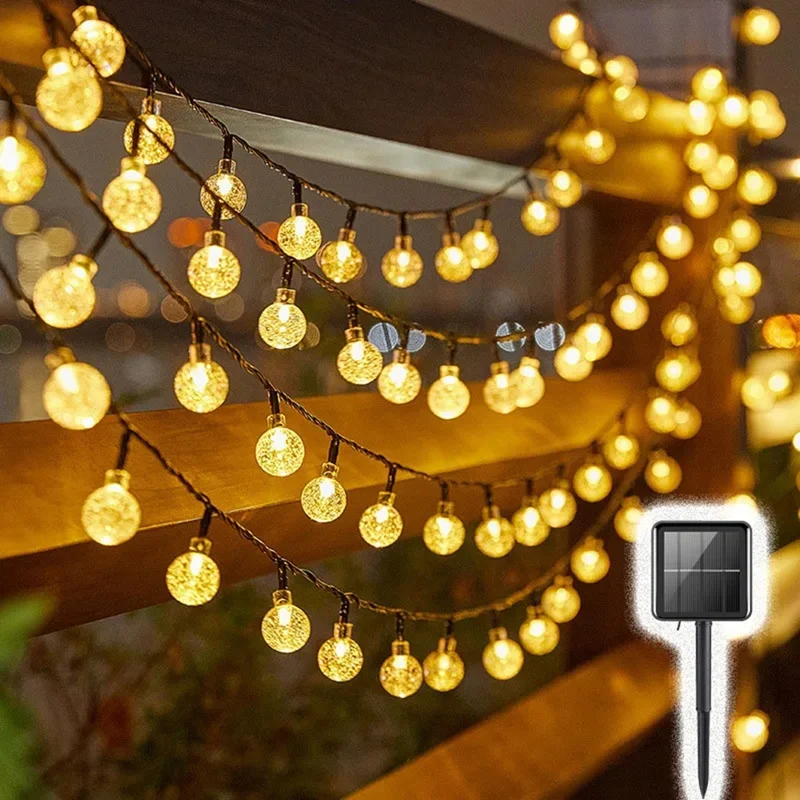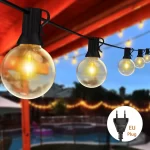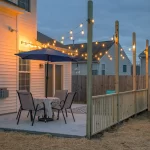String lights add a magical touch to any setting, whether it’s for a festive occasion, a backyard gathering, or simply to enhance the ambiance of your home. However, a common question that arises is, “The Ultimate Guide: How Many String Lights Can You Safely Connect Together?” This query is crucial not only for achieving the desired visual effect but also for ensuring safety. This comprehensive guide will delve into the various factors that influence the safe connection of string lights and provide practical tips to avoid hazards.
Understanding Electrical Load and Power Ratings
One of the key aspects of safely connecting string lights is understanding electrical load and power ratings. Each string of lights has a maximum wattage it can safely handle, and connecting too many strings together can exceed this limit, potentially causing overheating and electrical fires. Electrical load refers to the amount of power consumed by your lights. It is crucial to check the wattage rating of the lights and ensure that the cumulative wattage of all connected strings does not exceed the capacity of the electrical circuit they are plugged into. Typically, household circuits can handle up to 15 or 20 amps, translating to about 1,800 to 2,400 watts.
Calculating the Total Wattage
To determine how many string lights you can safely connect, first calculate the total wattage. Start by identifying the wattage of each individual string. This information is usually found on the packaging or the label attached to the light string. Multiply the wattage by the number of strings you plan to connect. For instance, if each string is 50 watts and you want to connect four strings, the total wattage would be 200 watts. Compare this total with the maximum wattage capacity specified by the manufacturer. Ensure that the total wattage does not exceed the recommended limit to maintain safety.
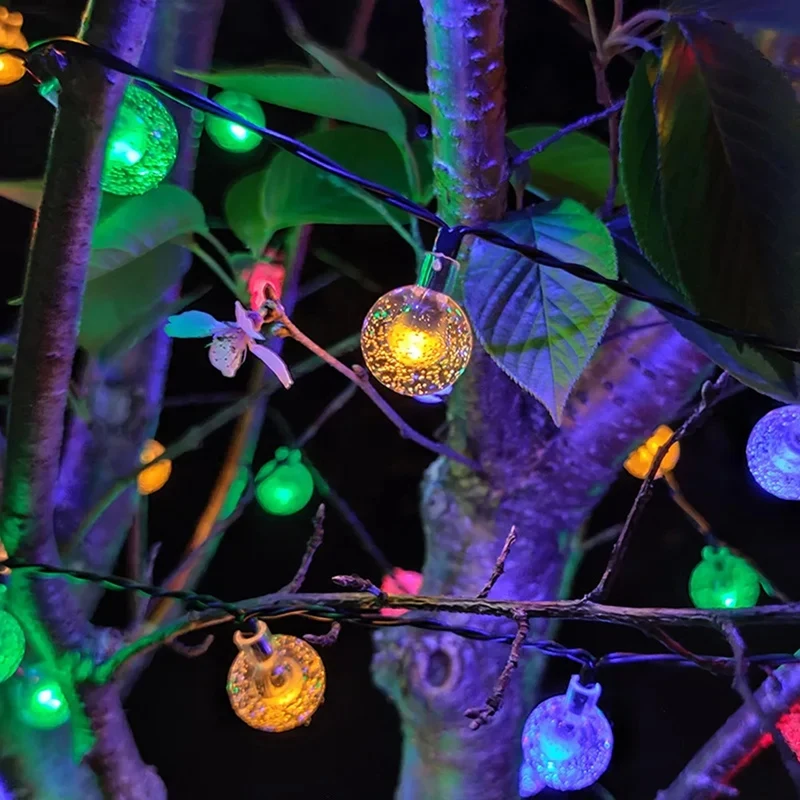
Considering the Type of String Lights
The type of string lights you use also affects how many can be safely connected. Incandescent and LED lights have different power requirements. Incandescent lights consume more power and generate more heat, limiting the number of strings that can be safely connected. On the other hand, LED lights are more energy-efficient, consume less power, and produce less heat, allowing for more strings to be connected end-to-end. For instance, it’s not uncommon for LED lights to allow up to 20 or more strings to be connected, whereas incandescent lights may only safely connect up to 3 or 4 strings.
Using Proper Extension Cords
Using the right extension cords is crucial when connecting multiple strings of lights. Avoid overloading extension cords, as this can cause them to overheat and potentially start a fire. Use heavy-duty extension cords rated for outdoor use if your lights are installed outdoors. Ensure that the extension cords have a sufficient amperage rating to handle the total wattage of the connected lights. Additionally, extension cords with built-in circuit breakers provide an extra layer of safety by shutting off the power if an overload is detected.
Safety Precautions for Outdoor String Lights
Outdoor string lights require additional safety precautions to withstand environmental factors such as moisture, wind, and temperature changes. Use string lights and extension cords that are specifically designed for outdoor use, as indicated by their rating. Ensure all connections are secure and protected from water. Use weatherproof covers for plugs and outlets to prevent moisture from causing short circuits. Additionally, avoid placing lights near flammable materials or areas where they can be easily damaged by wind or other environmental factors. Following these safety precautions will help prevent electrical hazards and ensure that your outdoor lighting remains safe and durable.
The Role of Circuit Breakers
Circuit breakers play a vital role in maintaining electrical safety when connecting multiple strings of lights. They are designed to shut off power when an overload or short circuit is detected. Ensure that your circuit breaker is in good working condition and has a sufficient amperage rating to handle the total electrical load of your connected lights. If you experience frequent trips of the circuit breaker, it may be an indication that you have overloaded the circuit. In such cases, reduce the number of connected lights or distribute the load across multiple circuits to prevent electrical hazards.
Implementing Parallel Connections
Instead of connecting string lights in series (end-to-end), consider parallel connections to distribute the electrical load more evenly. In a parallel connection, multiple strings are connected to different power sources or outlets, reducing the load on any single circuit. This method not only enhances safety but also allows for a more flexible and extensive lighting setup. Ensure that each power source has a sufficient wattage rating to handle the connected strings. Implementing parallel connections can significantly reduce the risk of overloading and provide a safer and more efficient lighting solution.
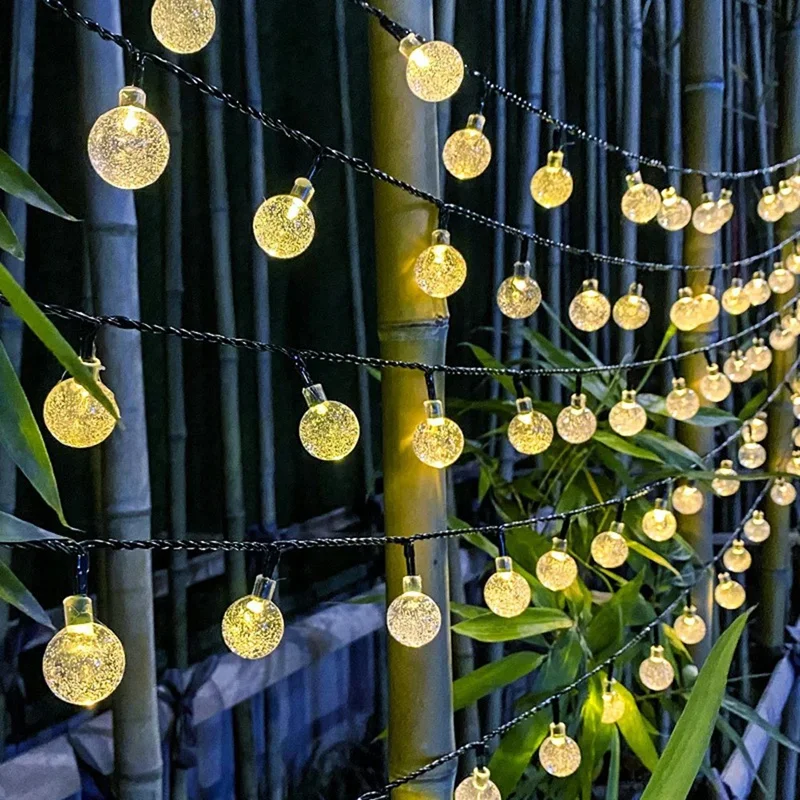
Using Smart Plugs and Timers
Smart plugs and timers are great tools for managing the use of string lights efficiently and safely. Smart plugs can monitor the power consumption of connected devices and provide real-time feedback. They allow you to control lights remotely and set schedules, ensuring that the lights are not left on for extended periods, which can reduce the risk of overheating. Timers can automate the on-and-off cycles of your lights, ensuring they are only operational during desired hours. Using these tools can help manage power usage, enhance convenience, and improve safety.
Importance of Regular Check-Ups
Regular inspection and maintenance of your string light setup are crucial for ongoing safety. Check the lights, cords, and connections periodically for any signs of wear, damage, or overheating. Replace any damaged components immediately to prevent potential hazards. Ensure that the connections are still secure and that there are no exposed wires or frayed cords. Regular check-ups help identify and address issues before they become serious, ensuring that your string lights remain safe and effective.
Energy Efficiency Considerations
Energy efficiency is an important consideration when setting up string lights. Opting for LED lights over incandescent lights can significantly reduce energy consumption and associated costs. LEDs are more efficient, have a longer lifespan, and produce less heat, making them a safer and more environmentally friendly option. Additionally, using energy-efficient lights allows you to connect more strings without exceeding the circuit’s capacity. Investing in LEDs and other energy-efficient solutions can enhance safety, reduce energy costs, and contribute to environmental sustainability.
Balancing Aesthetics and Safety
When designing your string light setup, it’s important to balance aesthetics and safety. While aiming for a visually appealing display, never compromise on safety measures. Plan your layout carefully to avoid overloading circuits and ensure that all connections are secure and protected. Use appropriate extension cords and distribution methods to manage the electrical load effectively. By prioritizing safety while achieving the desired aesthetic effect, you can create a beautiful and safe lighting display for any occasion.
Real-Life Examples and Case Studies
Looking at real-life examples and case studies can provide valuable insights into safely connecting string lights. For instance, large public lighting displays often utilize multiple circuits, parallel connections, and professional-grade equipment to manage extensive lighting setups safely. Homeowners who have successfully installed extensive string light displays typically follow manufacturer guidelines, use energy-efficient lights, and implement safety measures such as circuit breakers and timers. Learning from these examples can help you apply best practices and avoid common pitfalls in your string light projects.
Environmental Impact of String Lights
Consider the environmental impact of your string light setup. Opt for energy-efficient LED lights, which have a lower environmental footprint due to their reduced energy consumption and longer lifespan. When purchasing new lights, look for eco-friendly options made from recyclable materials. Dispose of old or damaged lights responsibly by recycling them according to local guidelines. By making environmentally conscious choices, you can enjoy your string light display while minimizing its impact on the planet.
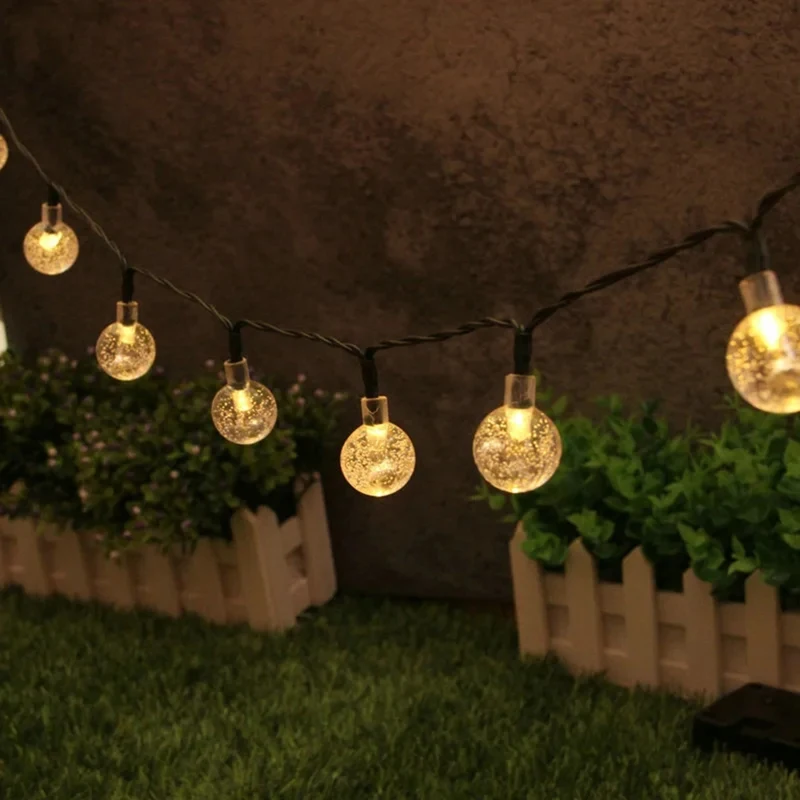
Conclusion
“The Ultimate Guide: How Many String Lights Can You Safely Connect Together?” provides a comprehensive understanding of the factors involved in safely connecting string lights. By considering electrical load, power ratings, and the type of lights, you can ensure a safe and effective setup. Reading manufacturer’s instructions, using proper extension cords, and implementing safety measures such as circuit breakers and parallel connections further enhance safety. Regular check-ups, energy efficiency considerations, and troubleshooting help maintain the functionality and safety of your lights. Balancing aesthetics and safety, learning from real-life examples, and considering environmental impact contribute to a successful and responsible lighting display. With these guidelines, you can safely and beautifully illuminate any space for various occasions, creating a stunning and safe lighting experience.
